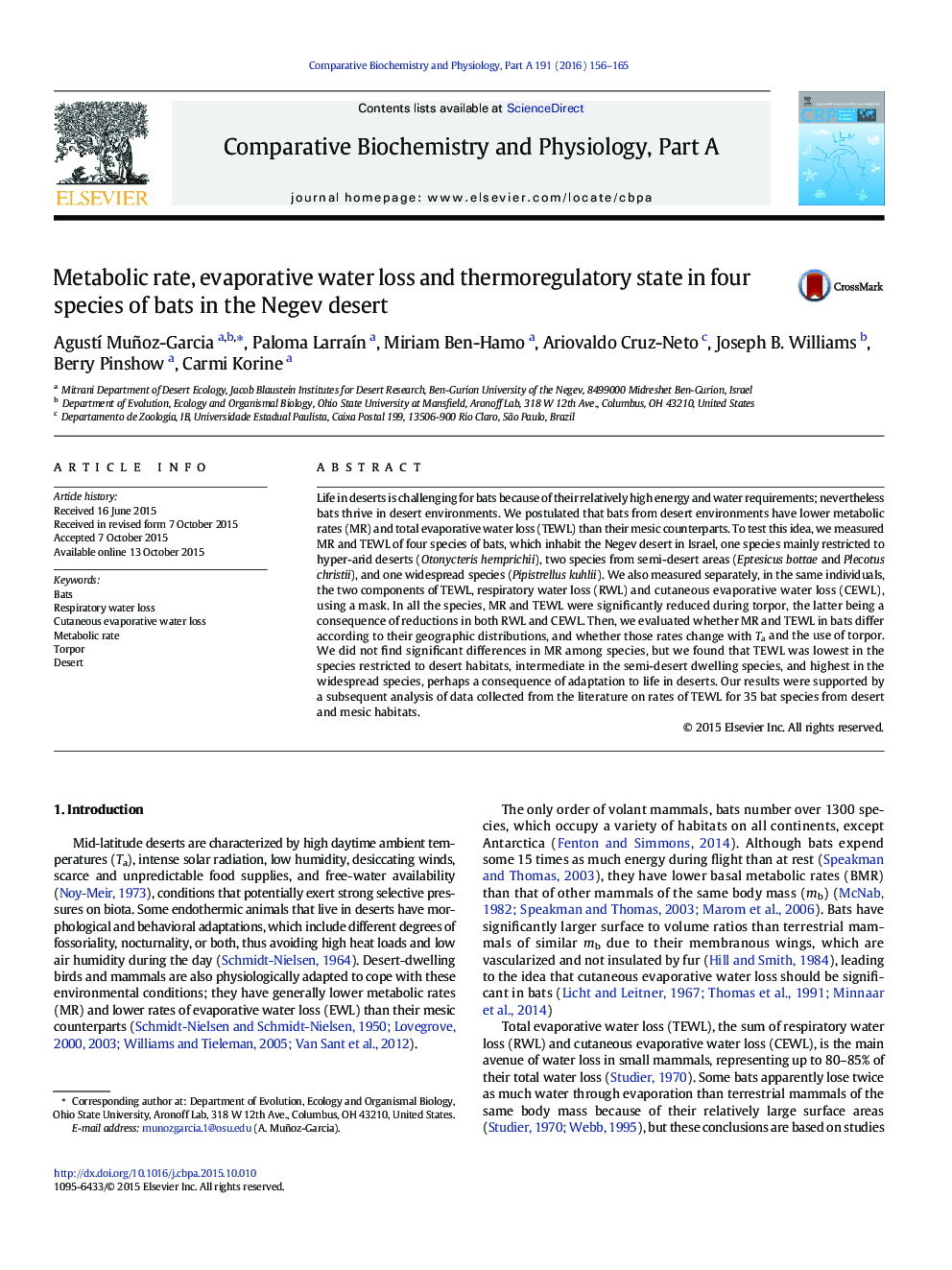| Article ID | Journal | Published Year | Pages | File Type |
|---|---|---|---|---|
| 1971997 | Comparative Biochemistry and Physiology Part A: Molecular & Integrative Physiology | 2016 | 10 Pages |
Life in deserts is challenging for bats because of their relatively high energy and water requirements; nevertheless bats thrive in desert environments. We postulated that bats from desert environments have lower metabolic rates (MR) and total evaporative water loss (TEWL) than their mesic counterparts. To test this idea, we measured MR and TEWL of four species of bats, which inhabit the Negev desert in Israel, one species mainly restricted to hyper-arid deserts (Otonycteris hemprichii), two species from semi-desert areas (Eptesicus bottae and Plecotus christii), and one widespread species (Pipistrellus kuhlii). We also measured separately, in the same individuals, the two components of TEWL, respiratory water loss (RWL) and cutaneous evaporative water loss (CEWL), using a mask. In all the species, MR and TEWL were significantly reduced during torpor, the latter being a consequence of reductions in both RWL and CEWL. Then, we evaluated whether MR and TEWL in bats differ according to their geographic distributions, and whether those rates change with Ta and the use of torpor. We did not find significant differences in MR among species, but we found that TEWL was lowest in the species restricted to desert habitats, intermediate in the semi-desert dwelling species, and highest in the widespread species, perhaps a consequence of adaptation to life in deserts. Our results were supported by a subsequent analysis of data collected from the literature on rates of TEWL for 35 bat species from desert and mesic habitats.
